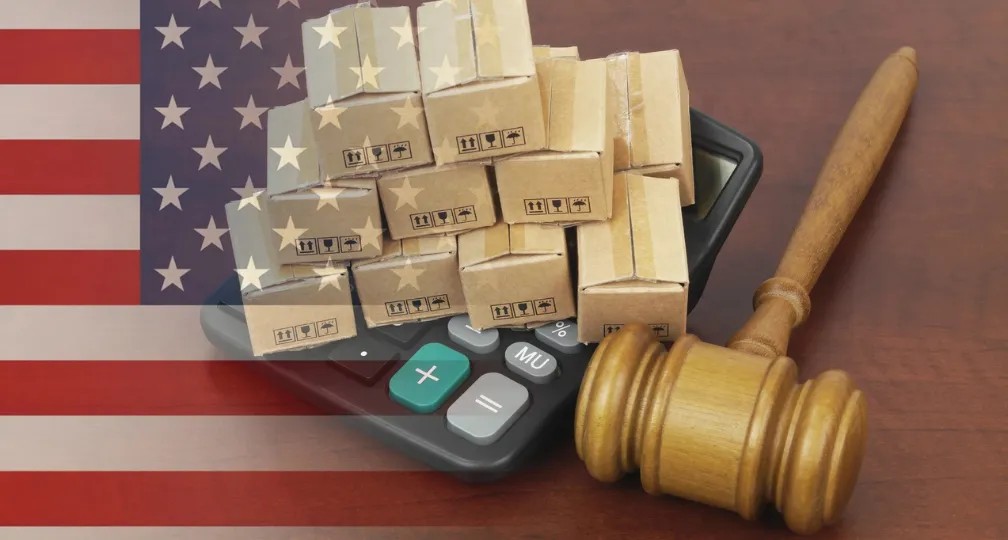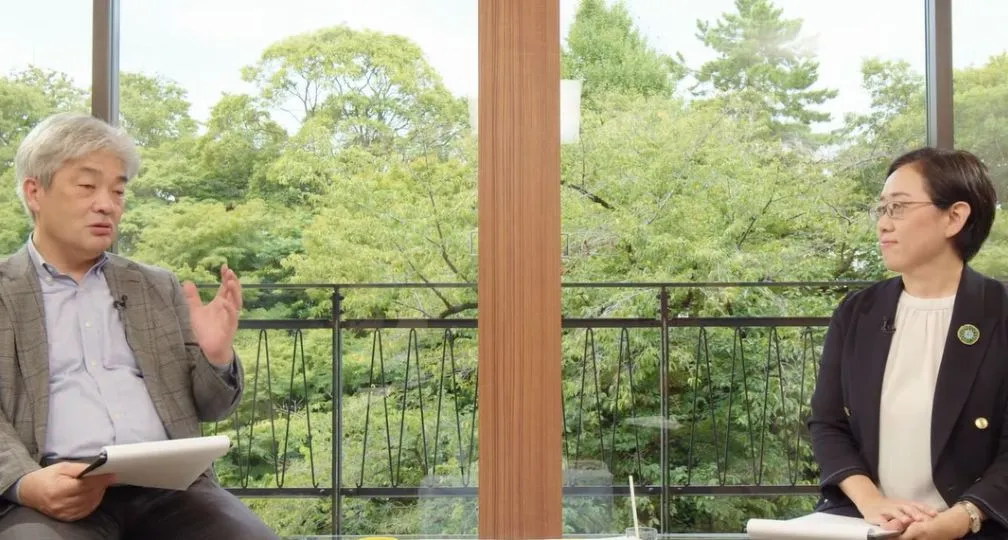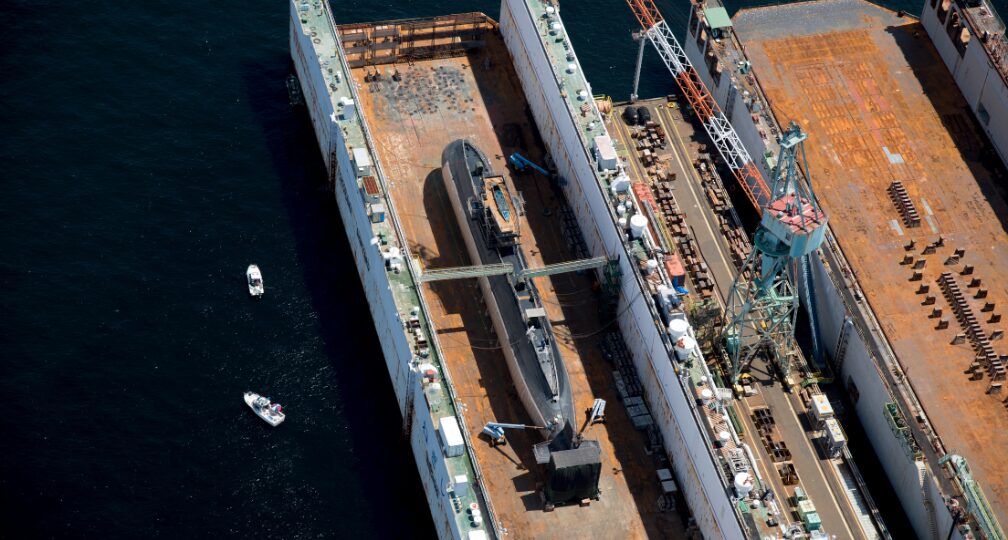The Strategic Shift from Territorial Defense to In-Depth Interdiction and the Unfinished Work of Transforming the Self-Defense Forces: Key Takeaways on Japanese Three Strategic Documents
It is highly credited that the density of the description and the richness of the initiatives and projects enumerated are unprecedented. Nonetheless, the three strategic documents do not necessarily clearly articulate the overall concept of how the Self-Defense Forces (SDF) should fight, partly because one of their centers of gravity is to break the existing policy restraint regarding counterstrike capabilities. In addition, while many capabilities and equipment to be significantly strengthened is enumerated, the future organization of the SDF to support these capabilities and equipment are not necessarily designed to be significantly transformed.
This paper will examine these issues by looking at three elements in turn: threat perception, warfighting concepts, and the future organization of the SDF.
Threat Perception: A Necessary Foundation for Clarifying Strategy
The government has stated that Japan’s defense buildup is not based on the idea of targeting specific countries and directly responding to them militarily, and this official statement will be undoubtedly maintained after the release of three strategic documents as well. On the other hand, the new National Security and Defense Strategies, recalling that a threat manifests itself through a combination of intentions and capabilities, states that defense capabilities will be built “focused on their [the opponent’s] capability” because it is difficult to accurately understand its intentions from the outside. In contrast to the first National Defense Program Guidelines in 1976, which set forth a “basic defense force concept” based on the assumption of an easing security environment during the Cold War détente period, this statement represents a severer recognition of the security environment than before where it assumes that a threat could materialize.
And by referring to China as the “greatest strategic challenge”, the government has clarified the top priority challenge for Japan’s national security strategy is China, even if it is not directly named as a threat for diplomatic and other considerations. The priority is now clear. While at a glance the significance of this for implementing defense buildup may seem abstract, its effect would loom large on the implementation of Japan’s strategy in the future in a gradual manner. This is because it is nothing other than a policy of prioritizing the allocation of defense resources to those aimed at China over those aimed at North Korea.
The more nuanced language appears in the sentences on the perception of Russia. Both strategies state Russia’s military activities “in the Indo-Pacific region, including Japan, together with its strategic coordination with China, are of strong security concern (from a defense perspective)”. If we take into account that the preceding sentence states that Russia’s military activities are “perceived as the most significant and direct threat to security in the European region”, the strategies indirectly imply that they do not necessarily see Russia as the “most significant and direct threat” in the Far East. On the other hand, in light of the cooperative actions with China in naval and air forces to date, there is a substantial possibility that Russia will continue to harass and demonstrate military actions against Japan, and impose a certain cost on Japan’s defense capabilities while seeking the favor of China. Such a situation will be, as the document states, “of strong concern” where Japan should reserve some defense resources.
Prioritization in threat perceptions is essential to clarifying strategy. And the three documents should be credited for their balanced description of this point.
Change in Warfighting Doctrine: From Territorial Defense to In-Depth Interdiction
The National Security Strategy and the National Defense Strategy respectively describe security and defense objectives, and systematically describe concepts such as deterrence, interdicting and repelling attacks, and the termination of conflicts. On the other hand, the new core concept of “……(something) Defense Force,” which had been conventionally presented in each revision of the previous National Defense Program Guidelines, was not presented this time.
This may be because the roles and characteristics of defense capabilities are becoming increasingly diverse, and thus the practical significance of presenting such a new single catchphrase in every review of the document was likely to be questioned. This is quite understandable. Nevertheless, from the perspective of presenting a succinct strategic document, defining a new strategic concept should have been as important as elaborating the definition of the counterstrike capability that has attracted so much attention.
However, while the three documents address the politically crucial issue of recognizing the counterstrike capability that the SDF has not possessed through policy restraint, they fall somewhat short of addressing the strategic challenge of conceptualizing the overall direction of SDF’s warfighting and systematically locating the counterstrike capability within that concept.
The documents define the counterstrike capability as “SDF’s capabilities that leverage stand-off defense capabilities and other capabilities. In cases where an armed attack against Japan has occurred, and as part of that attack ballistic missiles and other means have been used, counterstrike capabilities enable Japan to mount effective counterstrikes against the opponent’s territory”. The key to this definition is the capability to be exercised for self-defense in the opponent’s territory, and stand-off defense capabilities are to be used for this purpose. Based on this, the stand-off defense capabilities are capabilities that can be exercised from a greater distance, including not only against ground targets but also on targets at sea and in the air (although this is not defined in the document).
If so, the stand-off defense capabilities are essentially a broader concept that includes the counterstrike capabilities[1], but the description of how to fight using such capabilities is not clearly organized within the document. However, there is language in the documents that imply the warfighting concept the SDF should aim for in the future. In the National Security Strategy and the National Defense Strategy, the phrase ” to disrupt and defeat invasion at earlier timing and at locations further afield” is described as a defense capability to be strengthened by the end of the next decade. The Defense Buildup Program, states from the same perspective, “As a function and capability necessary for the defense of Japan, we must first be able to interdict and repel invading forces from a long distance in order to deter invasion itself against Japan”. The Defense Strategy and Defense Buildup Program then refer to the “need to ensure asymmetric advantage” by utilizing various capabilities possessed by the SDF, including stand-off defense capabilities.
This “interdicting and repelling of invasion at an earlier and more distant stage” and “ensuring asymmetric advantage” should have obtained the stronger focus as the concept of how the SDF should aim to fight against an opponent with a superior power by utilizing stand-off defense capabilities, including counterstrike capabilities. In a separate article, the author refers to this as the “Denial In-Depth Strategy”[2], but whatever the term should be, a clear organization of the warfighting concept should have been presented.
However, the fact that this way of thinking is at the bottom of the three documents reveals itself as a contrast when one looks at past government views. In the past, the government has stuck to the principle of “the Exclusively Defense-Oriented Policy” which is defined as “a passive defense strategic posture in accordance with the spirit of the Constitution, such as the use of defensive force only when the nation is subjected to an armed attack by an opponent, the means and methods of the attack limited to the minimum necessary for self-defense, and the defense capabilities to be maintained limited to the minimum necessary for self-defense”[3]. And although it is not included in the current version of the definition, during the Cold War period, the word “passive defense strategic posture” had an elaborative modifier of “in which the SDF defend our country exclusively within its territory and its adjacent areas through repelling invading forces as they intrude”[4].
This, in conjunction with the exceptional endorsement of the capability to attack an enemy base, indicates that Japan’s defense concept has long been based on the principle of territorial defense to repel armed attacks in its territory and on the adjacent high seas and that the use of force in the territory of other countries is permitted as exceptional and legally theoretical cases. This structure was maintained even when the government decided to introduce the modified Type 12 surface-to-ship guided missiles with an extended range in December 2020; the narrative for this acquisition was a measure to strengthen stand-off defense capabilities to respond to an invasion of the islands from outside the enemy’s threat zone in line with the concept of territorial defense[5]. Such a defense posture of “repelling as they intrude” was modified to the concept of interdicting and repelling an invasion at an earlier and more distant stage, including in the territory of the opponent, which is the most significant feature residing in the three strategic documents when viewed from a broader historical perspective.
One of the reasons for this is that, especially in the context of coping with China, the posture of waiting and repelling an attack on Japanese territory is no longer militarily viable, given the huge disparity in the scale of military power between Japan and China. The problem of a passive defense strategy of repelling each invasion is highlighted especially against an opponent capable of damaging our forces by first launching a stand-off attack with long-range missiles or large-scale sea-air power projection capabilities. Furthermore, if, Japan is invaded by an overwhelming force after accepting such damage, it will be overrun by invading troops and will not even be able to maintain the battle on the front line unless effectively interdicting them at an earlier stage with a greater distance.
From this perspective, it is important to interpret that the counterstrike capabilities constitute one part of the bigger defense concept of interdicting and repelling an attack by an opponent with a superior force from a more distant stage, including at sea and in the air.
On the other hand, since the conventional principle has restrained the ability to use force “in the opponent’s territory,” from the perspective of overcoming this restraint, many of the long-range missiles that are being aimed at strengthening this time are mainly for ground attacks, such as Tomahawk and high-velocity glide vehicles for island defense[6]. However, from the perspective of decimating an opponent with a disparity in troop strength at an earlier stage and a greater distance, it should not be overly concerned with ground-attack capabilities. Rather, assuming that the main battle area could be the East China Sea and the Western Pacific, emphasis should be placed more on long-range, stand-off anti-ship and anti-aircraft capabilities, or attack capabilities from undersea, and in the total package, ground attacks should be considered as an option, focusing on vulnerable fixed targets with intelligence gathering and other functions. To this end, it is also essential to strengthen ISR and targeting capabilities to support stand-off attacks, which are now being sought to be obtained through ISR satellites and unmanned aerial vehicles.
Future Posture of the Self-Defense Forces: Still Insufficient for Fundamental Reform
The key fields of capabilities to be strengthened listed in the National Defense Strategy and Defense Buildup Program are described as stand-off defense capabilities, unmanned defense capabilities, integrated air and missile defense capabilities, cross-domain capabilities, command, control, and intelligence-related functions, mobile deployment capabilities /civil protection, and sustainability and resiliency, with plans for equipment acquisition and various new units to accompany them.
Stand-off defense capabilities include the development and acquisition of improved Type 12 surface-to-ship guided missiles with an extended range (sea-launched and air-launched versions are also under development), high-velocity glide vehicles for island defense (Japanese version of hypersonic glide vehicles), hypersonic guided vehicles (Japanese version of hypersonic cruise missiles), and Tomahawks; research and developments on the new vertical launch system (VLS) that can be mounted on submarines and new anti-ship guided missiles for island defense were set forth as well. Although there is no explicit mention in the Program, it is likely that the acquisition of F-35-mounted JSMs and the F-15-mounted JASSMs would also continue. The acquisition of these long-range missiles is in the direction of continuity with the previous plan, increasing the number of variations of what had been organized as stand-off defense capabilities and adding more that are capable of land attack while extending their range.
In addition, the Program calls for a significant enhancement of unmanned defense capabilities for a variety of missions, including intelligence gathering, reconnaissance, targeting, and attack, which are necessary for operating stand-off defense capabilities. The direction of obtaining unmanned aircraft units in both the Ground, Maritime, and Air Self-Defense Forces should be highly credited. The expansion of unmanned aircraft fleets which can conduct attack operations will be extremely useful for the distributed and decentralized way of warfighting with small-footprint units which can asymmetrically interdict attacks by superior forces in the future. The Defense Strategy’s commitment to the early equipping of unmanned undersea vehicles (UUVs) should also be evaluated.
On the other hand, the biggest problem revealed in the Defense Buildup Program is that the size of the new units to be equipped with these weapons is too small taking into account the stated significance of enhancement of capabilities in these prioritized areas. In particular, given the importance of war-sustaining capability highlighted in the war in Ukraine, having a substantially large number of missile units could be indispensable. Nevertheless, the stand-off missile units in the Ground Self-Defense Force (GSDF) consist of only 11 additional companies (amounting to two plus regiments), two high-velocity glide vehicle battalions, and two long-range guided missile units that will be equipped with hypersonic cruise missiles, in addition to the sea and air-launched stand-off missile force of the maritime Self-Defense Force (MSDF) and Air Sell-Defense Force (ASDF). But the plan to create two high-velocity glide vehicle battalions was already announced in the 2018 Defense Program Guidelines, and other plans do not seem to significantly exceed the scale that had already existed or assumed prior to the release of the documents.
In addition to the unmanned aerial vehicle unit with the Global Hawks the ASDF has created, only one new multirole unmanned aerial vehicle fleet for the GSDF and two unmanned aerial vehicle fleets for the MSDF are planned to be created[7].
By contrast, the GSDF has a tendency to preserve big legacy units as they are in the Program; all 14 of its Divisions and Brigades, except for the 15th Brigade in Okinawa (upgraded to a division), would be labeled as deployable units, including seven regionally deployed divisions and brigades that were previously supposed to remain in the region and conduct counterterrorism and other operations without assuming deployable operations[8]. The number of MSDF naval fleets, which will also be important as platforms for stand-off missiles, has not changed from the level of the 2018 National Defense Program Guidelines, except for Aegis system-equipped vessels, perhaps reflecting personnel shortages. The Air Self-Defense Force’s operational aircraft fleets have been increased from 370 to 430, which is important, but further utilization of unmanned aircraft still remains a subject for future consideration.
In light of the above, it is clear that the announced drastic reinforcement of the SDF’s defense capability has an effect to create a dual structure, in which while maintaining legacy forces with residing challenges and problems intact, it plans to build newly strengthened capabilities such as stand-off defense capabilities, on top of those conventional legacy units without close reference to many of them.
Of course, it is undeniable to maintain robust reinforcement forces including the GSDF divisions and brigades, which will be reorganized as additional deployable units are necessary. However, no matter how many large divisions and brigades with outdated equipment go to reinforcements, they may become easy targets for the enemy. In the war in Ukraine, it is reported that Ukraine equipped old tanks with anti-tank missiles and other indirect-fire weapons, and used tanks as close to the role of artillery, in order to minimize damage by becoming the enemy’s target when shooting. The Russians later imitated this technique by firing missiles from tanks indirectly are the enemy to limit damage to themselves[9]. In present warfare, where firepower is increasingly precise, the Japanese tank force which relies on direct-firing tank guns would be forced to expose themselves to fire and become targets which can only increase damage. Even if the conventional divisions and brigades are planned to be maintained at a certain scale, constant updating to incorporate these new techniques to adapt to present and future warfighting will be indispensable.
If these legacy units remain untouched and fail to adapt to future warfare, they will not be able to secure the “asymmetrical superiority” that the Defense Strategy calls for. No matter how drastically new capabilities new documents require, the viability of the strategy will be in doubt if the force development plans necessary to achieve them are not bold enough.
Of course, it should be noted that new capabilities cannot be acquired overnight and that equipment development and personnel training must be conducted step by step. Among others, it must be especially taken into account that many of the new stand-off missiles are still under development and will take time to fully introduce. Nevertheless, the three strategic documents are only documents if they are not backed up by a solid plan that could materialize them. To realize this, the goals and contents of the Defense Buildup Program should continue to be constantly reviewed as new capabilities are introduced, without being skewed by the parochial interests of each SDF service.
[1]Strictly speaking, the counterstrike capabilities by the capabilities other than stand-off defense capabilities, that is, stand-in capabilities are also assumed, but since specific assets and units related to this are not elaborated in the documents, this is omitted here.
[2] Hirohito Ogi, “In dealing with Beijing, Tokyo must adopt a strong security front”, The Japan Times (December 20, 2022)
[3]“The Cabinet memorandum to the questions concerning interpretation on the authority of the Cabinet Legislative Bureau and the right of self-defense by the Diet member Hidenari Ito” (July 15, 2003).
[4]The answer by the Director-General for Defense Policy of the Japan Defense Agency Ko Maruyama in the Committee on Audit in the House of Councilors (May 12, 1976), no.6.
[5]“On Acquiring New Missile Defense System and Strengthening Stand-off Defense Capabilities” (Cabinet Decision, December 18, 2020).
[6]Note that it is still unclear which type of Tomahawks the Japanese government is planning to acquire. On this point, the new Tomahawk block V currently under development is designed for muti-roles against mobile maritime targets in addition to ground targets.
[7]In addition to these, it is unclear which units will be equipped with the targeting drones listed as the new Air Self-Defense Force’s projects in the Defense Buildup Program and the small attack drones listed as an unmanned asset defense capability.
[8]The Defense Buildup Program notes that “As a precondition for these measures, we will thoroughly optimize the organizational structure and examine the medium- to long-term force structure,” suggesting that although it admits that the current structure is not necessarily optimal, no conclusion was drawn regarding the direction of the review.
[9]Mykhaylo Zabrodskyi, et al., Preliminary Lessons in Conventional Warfighting from Russia’s Invasion of Ukraine: February–July 2022 (London: Royal United Services Institute for Defence and Security Studies, November 30, 2022), 17, 39-40.
Disclaimer: The views expressed in this commentary do not necessarily reflect those of the API, the Institute of Geoeconomics (IOG) or any other organizations to which the author belongs.


Senior Research Fellow
Hirohito Ogi is a senior research fellow at the Institute of Geoeconomics (IOG) studying military strategy and Japan’s defense policy. Before joining the IOG, Mr. Ogi had been a career government official at the Ministry of Defense (MOD) and Ministry of Foreign Affairs (MOFA) for 16 years. From 2021 to 2022, he served as the Principal Deputy Director for the Strategic Intelligence Analysis Office, the Defense Intelligence Division at the MOD, where he led the MOD’s defense intelligence. From 2019 to 2021, he served as a Deputy Director of the Defense Planning and Programming Division at the MOD. He holds a Master’s degree in international affairs from the School of International and Public Affairs (SIPA), Columbia University, and a Bachelor’s degree in arts and sciences from the University of Tokyo. He is the author of various publications including Comparative Study of Defense Industries: Autonomy, Priority, and Sustainability (co-authored, Institute of Geoeconomics, 2023).
View Profile-
 Analysis: Ready for a (Tariff) Refund?2025.12.24
Analysis: Ready for a (Tariff) Refund?2025.12.24 -
 China, Rare Earths and ‘Weaponized Interdependence’2025.12.23
China, Rare Earths and ‘Weaponized Interdependence’2025.12.23 -
 Are Firms Ready for Economic Security? Insights from Japan and the Netherlands2025.12.22
Are Firms Ready for Economic Security? Insights from Japan and the Netherlands2025.12.22 -
 Is China Guardian of the ‘Postwar International Order’?2025.12.17
Is China Guardian of the ‘Postwar International Order’?2025.12.17 -
 Japan-India Defense in a Fragmenting Indo-Pacific2025.12.10
Japan-India Defense in a Fragmenting Indo-Pacific2025.12.10
 The “Economic Security is National Security” Strategy2025.12.09
The “Economic Security is National Security” Strategy2025.12.09 The Tyranny of Geography: Okinawa in the era of great power competition2024.02.09
The Tyranny of Geography: Okinawa in the era of great power competition2024.02.09 Event Report: The Trump Tariffs and Their Impact on the Japanese Economy2025.11.25
Event Report: The Trump Tariffs and Their Impact on the Japanese Economy2025.11.25 Trump’s Tariffs Might Be Here to Stay – No Matter Who’s in Power2025.11.28
Trump’s Tariffs Might Be Here to Stay – No Matter Who’s in Power2025.11.28 The Real Significance of Trump’s Asia Trip2025.11.14
The Real Significance of Trump’s Asia Trip2025.11.14















